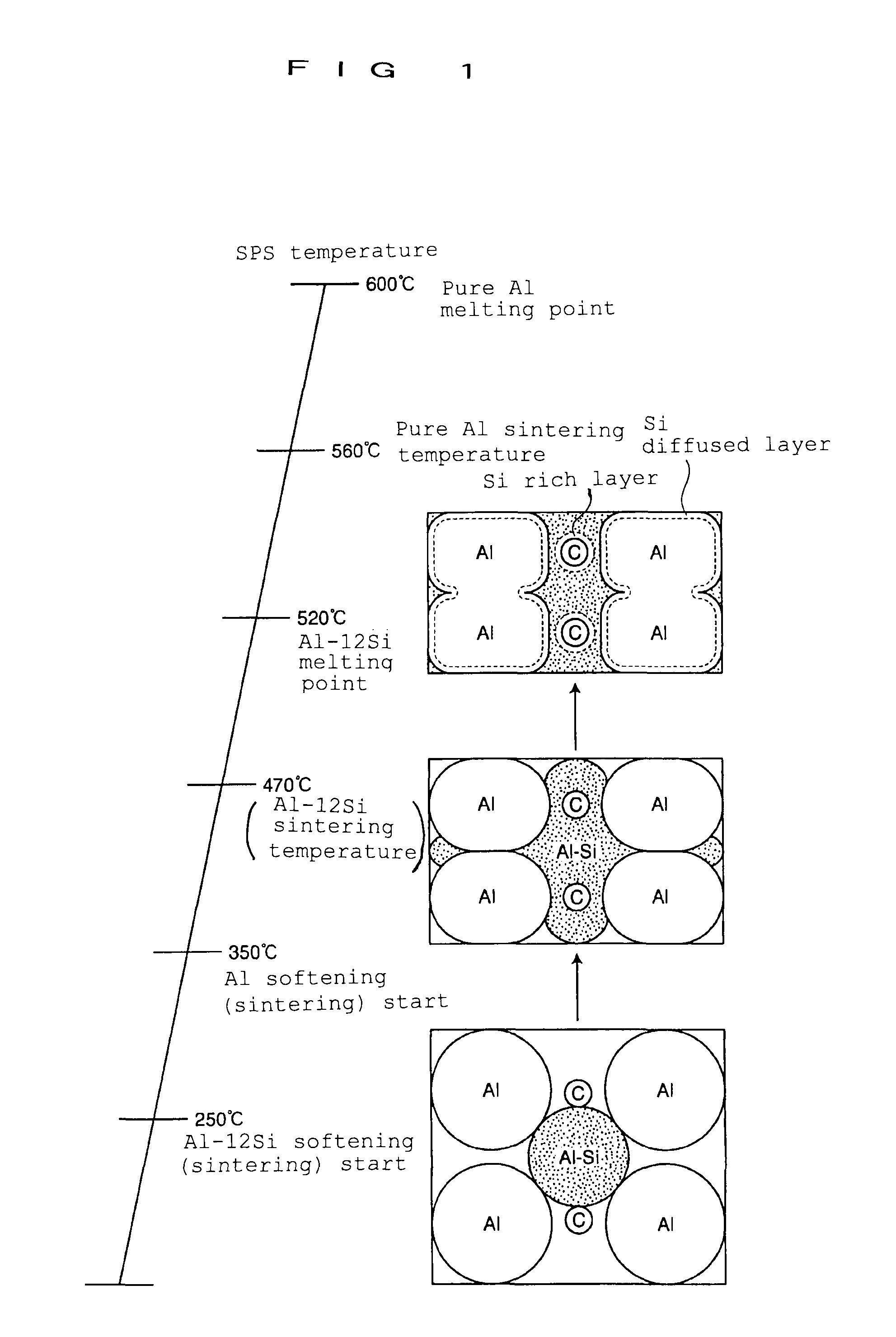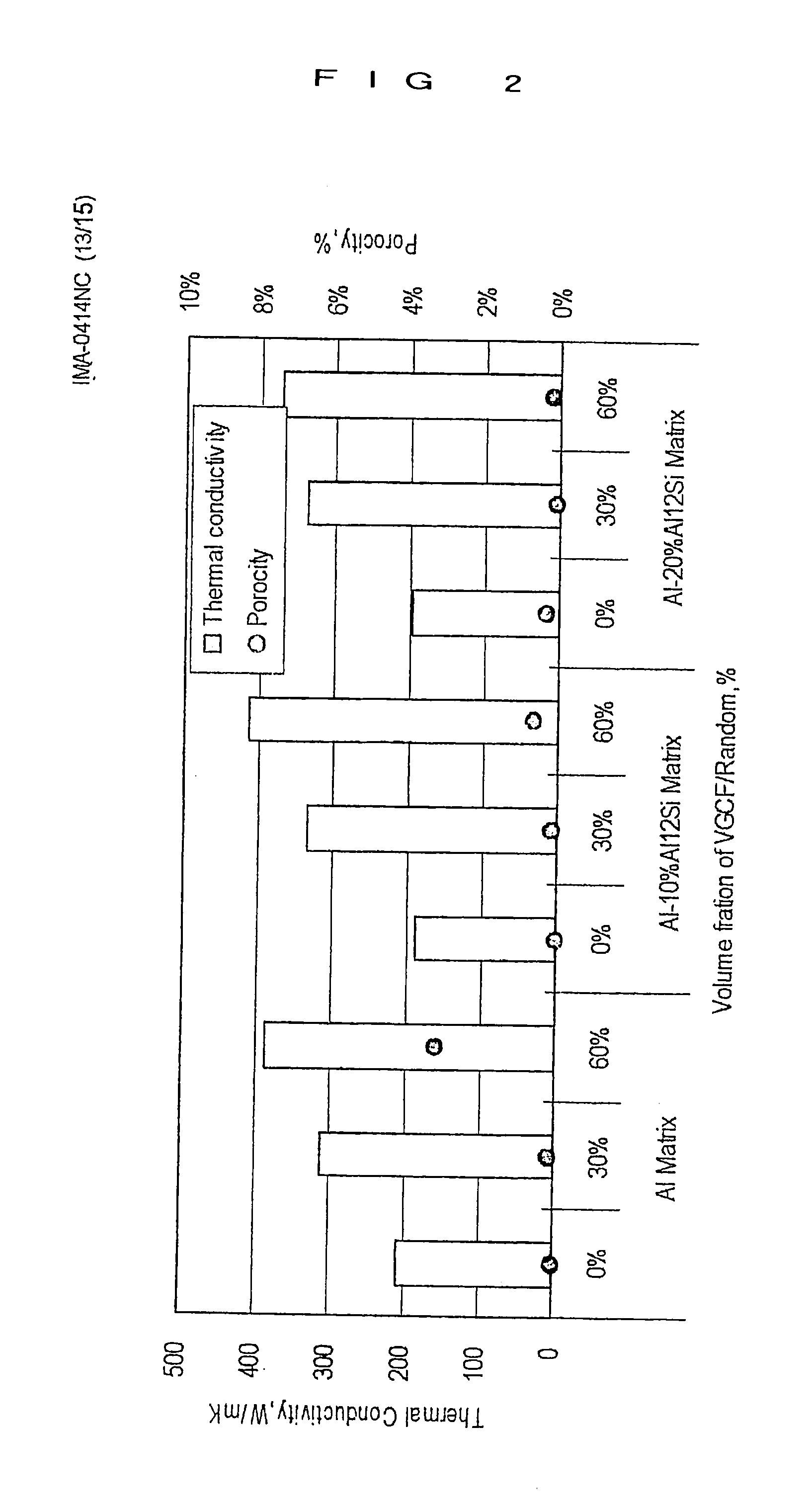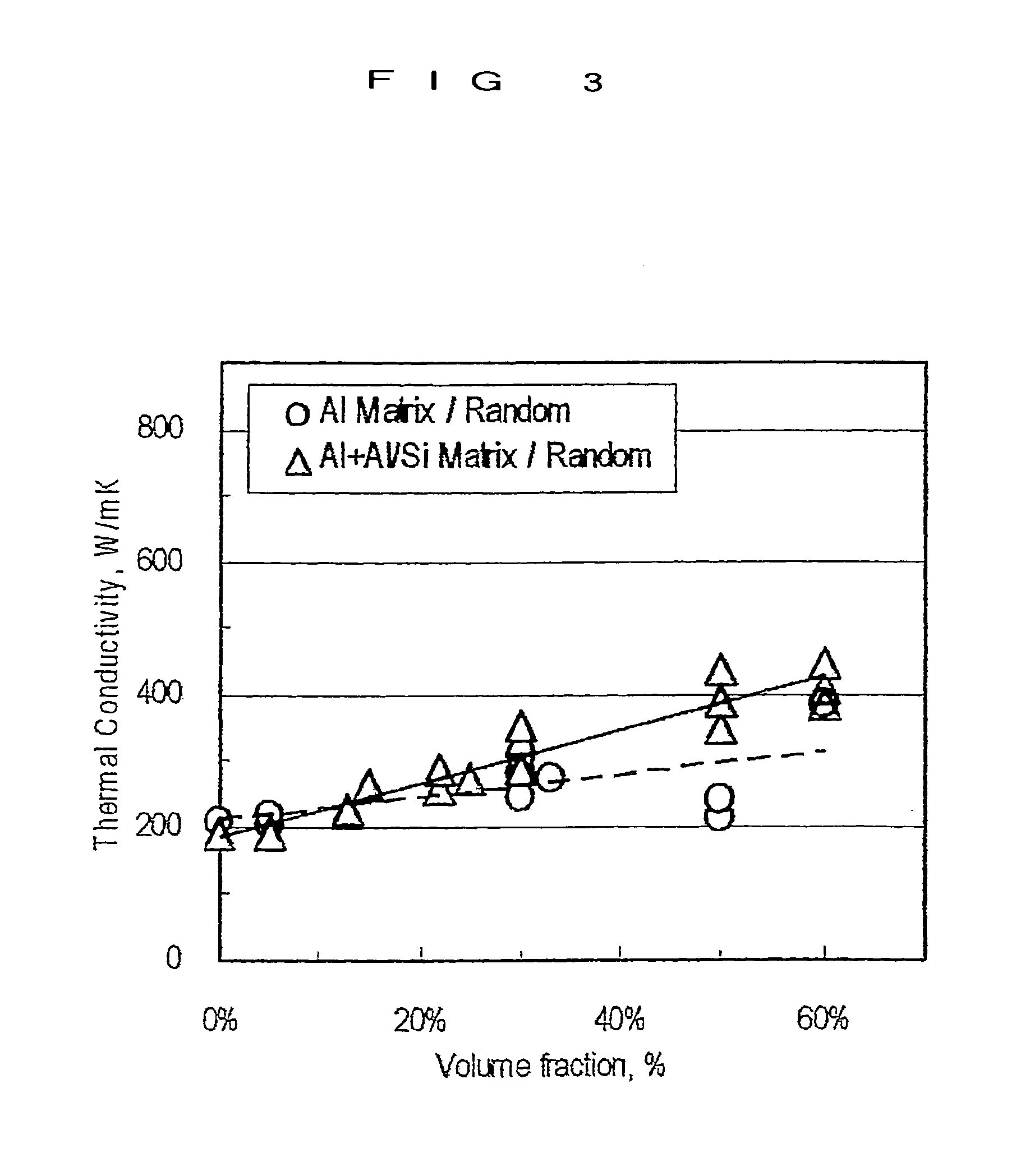Highly heat-conductive composite material
a composite material, high heat conductivity technology, applied in single-layer graphene, graphene, chemistry apparatus and processes, etc., can solve the problems of affecting the cost rise of the composite material, reducing the heat conductivity, and deteriorating the material strength, etc., to achieve excellent corrosion resistance or heat dissipation properties, excellent electric conduction, heat conductivity, and excellent durability.
- Summary
- Abstract
- Description
- Claims
- Application Information
AI Technical Summary
Benefits of technology
Problems solved by technology
Method used
Image
Examples
example 1
[0062]In a non-oriented type composite material of fiber dispersion structure, the effectiveness of containing the Al-12Si powder was examined. As a matrix mother material, a pure aluminum powder having an average particle size of 35 μm was used. To this, an Al-12Si powder having an average particle size of 40 μm was compounded, and the influence thereof given to the heat conductivity and the mechanical properties was examined. As a fibrous carbon material, a vapor growth carbon fiber having a thickness of 1 to 50 μm (10 μm on average) and a length of about 2 to 3 mm was used.
[0063]After the pure aluminum powder, the Al-12Si powder, and the vapor growth carbon fiber were sufficiently kneaded with use of a kneading machine, the kneaded material was put into a die of a spark plasma sintering apparatus, and spark plasma sintering was carried out under a condition of 560° C. and 60 minutes. During that time, the temperature rising rate was set to be 20° C. / min, and a pressure of 30 MPa ...
example 2
[0071]In a one-dimensional oriented type composite material of fiber lamination structure, the effectiveness of an Al-12Si powder was examined. As a mother material powder of the matrix, a pure aluminum powder having an average particle size of 35 μm was prepared, and an Al-12Si powder having an average particle size of 40 μm was prepared as an auxiliary agent powder. Then, as the matrix powder, two kinds were prepared, where one kind was a pure aluminum powder alone, and the other kind was a mixed powder in which an Al-12Si powder was compounded at 10 wt % into a pure aluminum powder.
[0072]As a fibrous carbon material, an orientation sheet of a vapor growth carbon fiber was prepared. The orientation sheet of the vapor growth carbon fiber is a densely gathered body of the vapor growth carbon fiber having a thickness of 1 to 50 μm (10 μm on average) and a length of about 2 to 3 mm, and is a fiber orientation sheet having a thickness in the order of 100 μm in which the direction of th...
PUM
| Property | Measurement | Unit |
|---|---|---|
| temperature | aaaaa | aaaaa |
| temperature | aaaaa | aaaaa |
| melting point | aaaaa | aaaaa |
Abstract
Description
Claims
Application Information
 Login to View More
Login to View More - R&D
- Intellectual Property
- Life Sciences
- Materials
- Tech Scout
- Unparalleled Data Quality
- Higher Quality Content
- 60% Fewer Hallucinations
Browse by: Latest US Patents, China's latest patents, Technical Efficacy Thesaurus, Application Domain, Technology Topic, Popular Technical Reports.
© 2025 PatSnap. All rights reserved.Legal|Privacy policy|Modern Slavery Act Transparency Statement|Sitemap|About US| Contact US: help@patsnap.com



